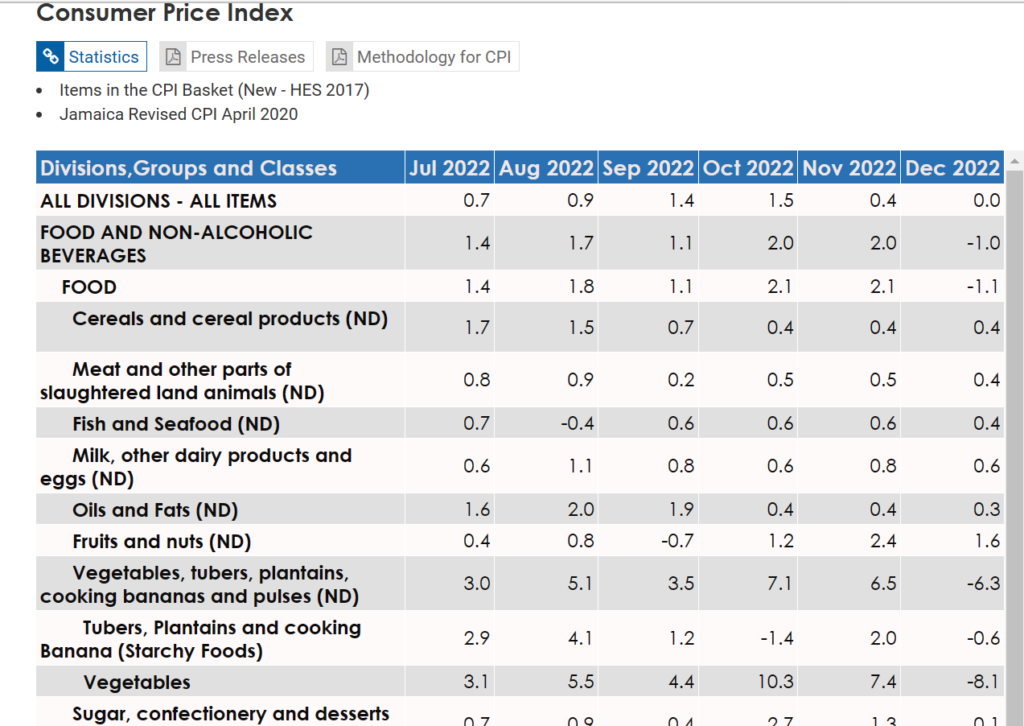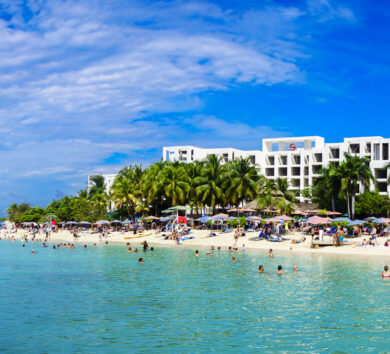

According to recent statistics from the Statistical Institute of Jamaica (STATIN), the All-Jamaica Consumer Price Index saw a negligible decline to 127.95 points in December 2022 compared to the 128 points recorded in November.
Some of the contributing factors to the decline were food and alcoholic beverages which resulted in a 1 per cent decline and transportation which saw a 0.9 per cent decline.
Despite this marginal decline in the CPI for December 2022, Jamaica continues to see an increase in its Consumer Price Index (CPI) every year. The country’s Consumer Price Index for December 2021 rose to 117 points compared to 116 points recorded in November 2021.
The Consumer Price Index is an indicator of a country’s inflation rate and measures the cost of goods purchased by private households.

For many Jamaicans, the current price of some food items continues to affect their quality of life in terms of how they are able to afford healthier foods and live comfortably.
Simosha Mcintyre, a security officer told Our Today that: “When I go to the wholesale I see where I have to pay more money for goods, and you get less stuff. This affects me a lot because of being a single mother and it’s really hard to ensure that my kids are well taken care of.”
Mcintyre’s notions were echoed by Errol Smith, who outlined that: “Each time I go to buy goods, sometimes I have to leave the goods because the money me carry to buy the goods was for the price before, so eventually [prices] it changes-so, it’s not easy it’s tough.”
He further noted that: “You can even afford to eat healthy in this country because if you’re going to purchase fruits and vegetables that the doctor recommends it’s going to cost you an arm and a leg. So, if you fi really eat right, you in serious trouble.”
According to the World Health Organization (WHO), a healthy diet includes fruits, vegetables, nuts, protein and whole grains which reduce salt and sugar intake.

A United Nations report, 22.5 per cent of Latin America and the Caribbean population cannot afford a healthy diet. The statistics revealed that In the Caribbean 131.3 million people in the region could not afford a healthy diet in 2020.
This figure represents an eight million increase compared to 2019 and the study showed that the increase is a result of the higher daily cost of living in the Caribbean and Latin America compared to other countries.
Mario Lubetkin, Food and Agriculture Organization (FAO) assistant director-general and regional representative for Latin America and the Caribbean, noted that: “To contribute to the affordability of healthy diets, it is necessary to create incentives for the diversification of the production of nutritious foods aimed mainly at family farming and small-scale producers, take measures for the transparency of the prices of these foods in markets and trade, and actions such as cash transfers and improving school menus.”
He also outlined there is no one policy to solve the current issue affecting the Caribbean and Latin America but there is a need for greater cooperation in national and regional coordination to respond to hunger and malnutrition.







Comments